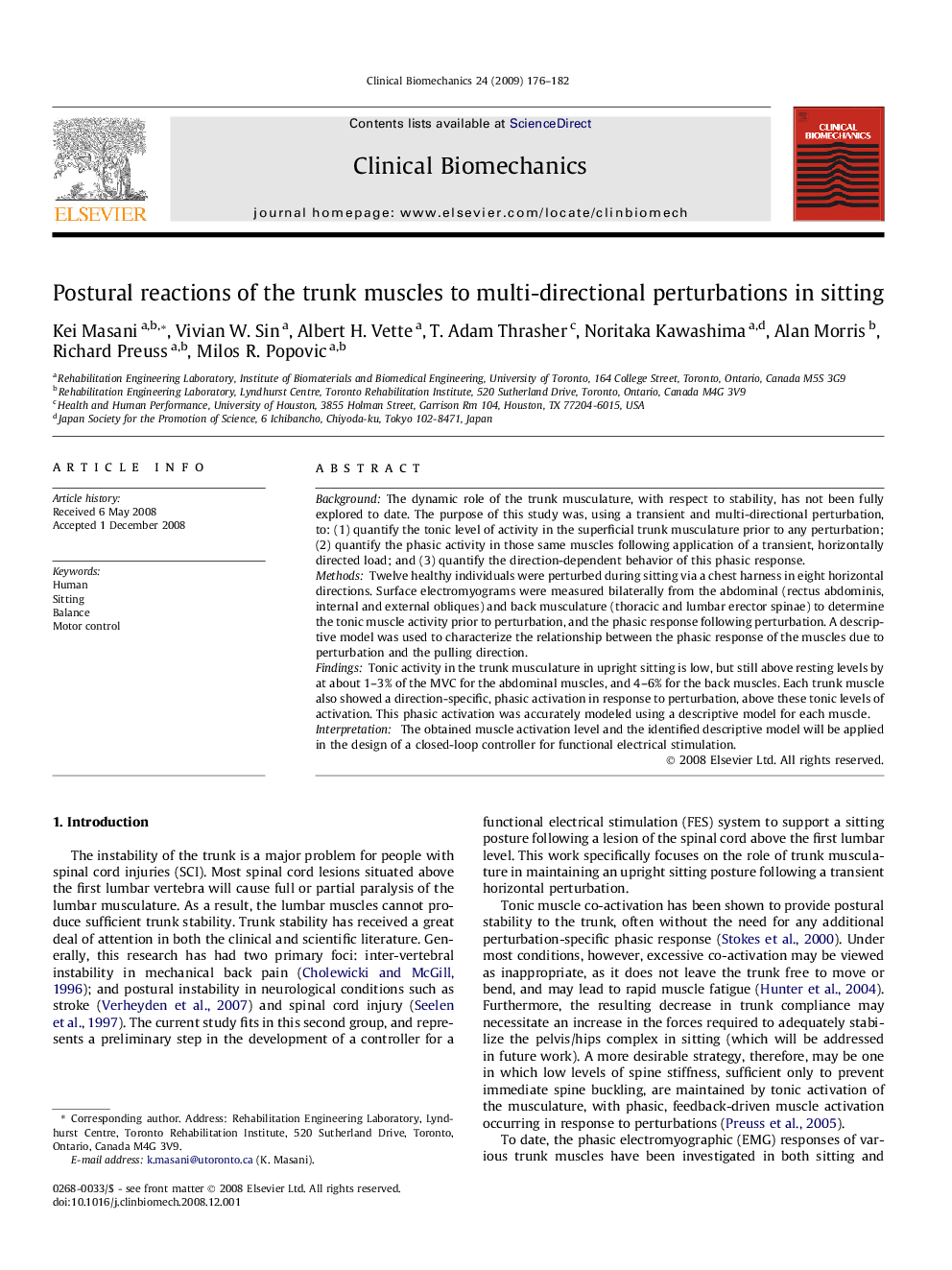| Article ID | Journal | Published Year | Pages | File Type |
|---|---|---|---|---|
| 4051025 | Clinical Biomechanics | 2009 | 7 Pages |
BackgroundThe dynamic role of the trunk musculature, with respect to stability, has not been fully explored to date. The purpose of this study was, using a transient and multi-directional perturbation, to: (1) quantify the tonic level of activity in the superficial trunk musculature prior to any perturbation; (2) quantify the phasic activity in those same muscles following application of a transient, horizontally directed load; and (3) quantify the direction-dependent behavior of this phasic response.MethodsTwelve healthy individuals were perturbed during sitting via a chest harness in eight horizontal directions. Surface electromyograms were measured bilaterally from the abdominal (rectus abdominis, internal and external obliques) and back musculature (thoracic and lumbar erector spinae) to determine the tonic muscle activity prior to perturbation, and the phasic response following perturbation. A descriptive model was used to characterize the relationship between the phasic response of the muscles due to perturbation and the pulling direction.FindingsTonic activity in the trunk musculature in upright sitting is low, but still above resting levels by at about 1–3% of the MVC for the abdominal muscles, and 4–6% for the back muscles. Each trunk muscle also showed a direction-specific, phasic activation in response to perturbation, above these tonic levels of activation. This phasic activation was accurately modeled using a descriptive model for each muscle.InterpretationThe obtained muscle activation level and the identified descriptive model will be applied in the design of a closed-loop controller for functional electrical stimulation.
